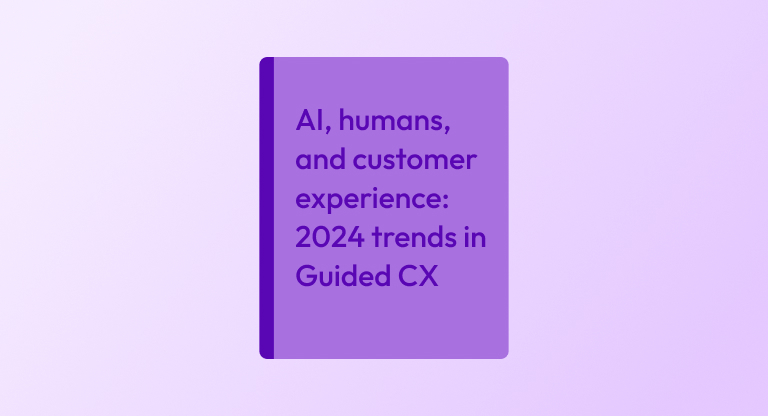Customer service plays an important role in every industry — especially healthcare. You might have the most knowledgeable and skilled providers, but if they aren’t giving patients a positive experience, they won’t be recognized for giving quality care.
Healthcare consumers don’t just want treatment; they want care. Every single healthcare worker who engages with them is a customer service representative, and every touchpoint is an opportunity to impact the patient/customer experience.
A positive customer experience means a happier customer/patient. A happier patient is more likely to return for services. They’re also more likely to refer their family and friends. Focusing on customer service isn’t just important for the customer experience; it’s important for your bottom line.
Here are six ways you can improve customer service in healthcare today.
Take a patient-centered approach
Your focus should be on long-term customer/patient relationships, not one-off transactions. Because especially in healthcare, customers are more than transactions. They’re people, people who often are in a vulnerable position.
The Institute of Medicine defines patient-centered care as “Providing care that is respectful of, and responsive to, individual patient preferences, needs and values, and ensuring that patient values guide all clinical decisions.”
That means everyone from the front desk staff to physicians has a role to play. It means asking questions and actually listening to and respecting the answers. It means trusting the patient when they share their experience.
When every team member is committed to serving the patient, rather than just treating a diagnosis, the quality of care is elevated.
Simplify processes
Healthcare customers are often frustrated by confusing paperwork and complex systems. According to the Kaiser Family Foundation (KFF), over half of members found it too complicated to complete an insurance application on their own, and 62% didn’t understand health coverage options.
Simplifying processes can go a long way in improving customer service in healthcare. It can also help you gain operational efficiencies. For example, if a patient repeats their symptoms with every person they interact with, that can cause frustration on their end and add unnecessary time to their visit.
Technology can and should play a key role here, as the digital patient experience is no longer negotiable.
- Text and email messages can remind patients about appointments, provide directions, follow up, and more.
- AI-powered chatbots can quickly address some patient needs, like scheduling routine appointments, updating policies, and answering common questions.
- Guided CX/visual engagement can provide a more efficient and seamless patient experience because the customer service representative is able to see what the patient is seeing.
- Registration kiosks can allow patients to quickly and easily check themselves in.
Through the right healthcare CX tech stack and streamlined processes, you can provide better healthcare customer service that benefits patients, providers, and the institution as a whole.
Read: What should be in your healthcare CX tech stack?
Establish and maintain trust
Healthcare consumers are often frustrated by a difficult-to-navigate system and an overload of information from Dr. Google. Establishing trust between a patient and healthcare provider is linked to improved patient experience, health outcomes, and the patient’s perception of the care they receive.
In a large focus group, nearly 80% of patients said they wouldn’t return to the same provider if they had an experience where they lost trust. (Source: Deloitte Insights)
Clearly, trust matters in healthcare. So how do we establish or rebuild trust? One word: empathy — a cornerstone of customer service. If you want the patient to trust you, you have to trust the patient. Beyond treatment, they want to feel heard, seen, and understood.
Offer transparency
Being transparent with healthcare customers can also help build trust. Be transparent about:
- How their personal information is shared and used (and make it easy for them to securely access that information)
- What their financial responsibilities are, as well as payment options
- Treatment options
Electronic health records (EHRs) play a central role in transparency, but they are a tool. It takes payers, providers, patients, and communities using these tools appropriately and collaboratively to impact the healthcare customer experience.
Consider the end-to-end customer/patient experience
The customer experience isn’t confined to appointment interactions. A healthcare consumer’s impression is based on a holistic journey — from online research, to appointment scheduling, to care delivery, billing, and follow-up.
At every touchpoint, customer service should be available to help customers/patients feel safe and supported. Scheduling systems, communication tools, and even the way referrals and transfers are handled can make or break the healthcare customer experience and show them that they’re more than a business transaction.
Read: Healthcare customer experience trends for 2022
Cater to diversity
Patient-centered care requires a level of cultural competency. While a certain treatment may be what is “best” in terms of effectiveness, if it goes against a patient’s religion, values, or preferences, then it’s not what’s best for them.
To better serve a diverse healthcare consumer population, healthcare organizations can:
- Address issues of implicit biases through ongoing education (race, ethnicity, gender, sexuality, etc.)
- Diversity the healthcare workforce to better mirror the patients served
A study from Penn Medicine found that patients who shared the same racial or ethnic background as their physician were more likely to give the maximum patient rating score. This underscores the need to diversify the workforce and eliminate racial and ethnic biases that can affect care delivery.
Implement an omnichannel support desk
Today’s customer expects a seamless experience. Whether they interact with you on your website, via phone, or through text messages, they expect consistency. They expect that information should persist as they move among these different channels, and that they shouldn’t have to repeat information as your company switches between them.
Having an omnichannel support desk — where customer service representatives can connect with patients on different channels from one centralized location — brings all patient interactions together on one screen to ensure customers have a seamless experience across all of your CX applications.
Improve customer service in healthcare: download your guide
Are you striving to improve your healthcare customers’ end-to-end experience? Download your free copy of our guide, Cultivating Personal Customer Experiences in Healthcare, to gain valuable information and insights to propel you forward.





